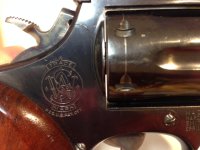jschenck
Member
I have no experience with these classics. This is the first one I've handled and I bought it!
Is this amount of movement typical/normal?
[ame="https://www.youtube.com/watch?v=1P40h54F3xY"]https://www.youtube.com/watch?v=1P40h54F3xY[/ame]
Is this amount of movement typical/normal?
[ame="https://www.youtube.com/watch?v=1P40h54F3xY"]https://www.youtube.com/watch?v=1P40h54F3xY[/ame]
Last edited:


